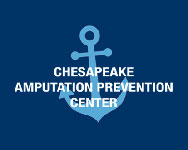Recovery Process
Recovery from an ankle fracture can be a lengthy process, and it often depends on the severity of the injury and the treatment approach. The key phases of recovery include:
- Initial Healing: In the first 6-8 weeks after injury, the focus is on the initial healing of the fractured bones. Immobilization is often required, and
![someone icing their foot during an ankle fracture recovery | Annapolis Podiatrist]() weight-bearing may be restricted during this period.
weight-bearing may be restricted during this period. - Rehabilitation: Once the bones have healed sufficiently, physical therapy becomes a crucial aspect of recovery. Rehabilitation exercises aim to strengthen the ankle, improve range of motion, and enhance overall function.
- Return to Normal Activities: The timeline for returning to regular activities varies from person to person. Athletes and individuals with physically demanding jobs may require longer recovery periods.
- Long-Term Care: After recovery, it's essential to continue taking care of your ankle. This includes maintaining a healthy lifestyle, addressing any underlying conditions that may have contributed to the fracture (such as osteoporosis), and wearing supportive footwear when necessary.
Preventing Ankle Fractures
While some ankle fractures are inevitable due to accidents or unforeseen circumstances, there are steps you can take to reduce your risk:
- Use Proper Footwear: Choose shoes with proper arch support and shock absorption, especially if you engage in high-impact activities.
- Strengthen Ankle Muscles: Regular exercises to strengthen the ankle muscles and improve balance can help prevent fractures.
- Avoid Overexertion: Don't push your body beyond its limits during sports or other activities. Listen to your body and rest when needed.
- Address Underlying Conditions: If you have osteoporosis or another condition that weakens your bones, work with your healthcare provider to manage and treat it.
Ankle fractures are a common injury that can impact anyone, regardless of age or activity level. Understanding the causes, types, treatments, and recovery processes associated with ankle fractures is essential for those at risk of injury and those currently experiencing one. With proper care, rehabilitation, and preventive measures, individuals can minimize the impact of these injuries and return to their regular activities with a strong and stable ankle.


 weight-bearing may be restricted during this period.
weight-bearing may be restricted during this period. 



